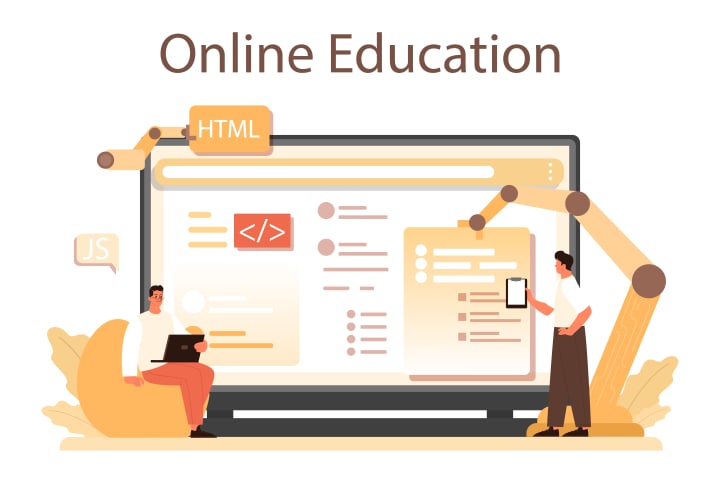
The rise of digital learning has revolutionized education and professional training, making it possible to deliver customized learning experiences to a wide audience. Custom eCourse development allows educators, organizations, and businesses to create tailored courses that meet specific needs and objectives. This article explores the key aspects of custom eCourse development, its benefits, and the steps involved in creating effective eLearning modules.

Introduction
In today’s fast-paced and dynamic world, the demand for personalized learning experiences is greater than ever. Custom eCourse development is an approach that addresses this need by designing courses tailored to the unique requirements of learners and organizations. Unlike off-the-shelf eLearning solutions, custom eCourses offer flexibility, relevance, and engagement, making them a valuable tool for education and training.
Benefits of Custom eCourse Development
- Relevance and Specificity: Custom eCourses are designed to address the specific needs and goals of an organization or learner group. This ensures that the content is highly relevant and directly applicable, enhancing the learning experience and outcomes.
- Flexibility and Adaptability: Custom eCourses can be easily updated and modified to reflect changing needs, industry trends, or new information. This adaptability ensures that the course remains current and effective over time.
- Engagement and Interactivity: Tailored eCourses can incorporate interactive elements, multimedia, and real-world scenarios that resonate with the target audience. This enhances engagement and helps learners retain information more effectively.
- Brand Alignment: For businesses and organizations, custom eCourses can be designed to align with the brand’s identity and values. This creates a cohesive learning experience that reinforces brand messages and culture.
- Scalability: Custom eCourses can be scaled to accommodate different sizes of learner groups, from small teams to large organizations. This scalability makes them a versatile solution for various training needs.

Key Steps in Custom eCourse Development
Needs Assessment and Goal Setting
The first step in custom eCourse development is to conduct a thorough needs assessment. This involves identifying the target audience, understanding their learning needs, and defining the specific goals and objectives of the course. Clear goals provide a foundation for the entire development process.
Content Development and Structuring
Once the goals are set, the next step is to develop and structure the course content. This includes gathering relevant information, organizing it logically, and creating a detailed course outline. Content should be broken down into manageable modules or lessons, each with specific learning outcomes.
Design and Development
In this phase, the course takes shape through the design and development of the actual eLearning materials. This includes creating multimedia elements (videos, animations, infographics), interactive activities (quizzes, simulations), and other engaging content. Instructional designers and multimedia experts often collaborate to ensure a high-quality learning experience.
Integration of Technology
Selecting the appropriate eLearning platform and tools is crucial for delivering the custom eCourse. The platform should support the desired features and functionalities, such as tracking learner progress, providing feedback, and facilitating communication. Integration with existing systems (e.g., Learning Management Systems) may also be necessary.
Pilot Testing and Feedback
Before the full launch, it’s essential to conduct pilot testing with a small group of learners. This allows for the identification and correction of any issues or gaps in the content, design, or technology. Gathering feedback from pilot participants is invaluable for refining and improving the course.
Implementation and Launch
After making necessary adjustments, the custom eCourse is ready for implementation and launch. This involves rolling out the course to the target audience, providing necessary support and resources, and ensuring that the technology works smoothly.
Evaluation and Continuous Improvement
The final step is ongoing evaluation and improvement. Collecting data on learner performance, engagement, and feedback helps assess the effectiveness of the course. Based on this information, continuous improvements can be made to keep the course relevant and effective.

Conclusion
Custom eCourse development is a powerful approach to creating personalized and effective learning experiences. By tailoring courses to the specific needs and goals of learners and organizations, custom eCourses enhance relevance, engagement, and outcomes. Following a structured development process, from needs assessment to continuous improvement, ensures that the final product is a high-quality, impactful eLearning module. As the demand for personalized learning grows, custom eCourse development will continue to play a crucial role in education and professional training.
About the Creator
Enjoyed the story? Support the Creator.
Subscribe for free to receive all their stories in your feed. You could also pledge your support or give them a one-off tip, letting them know you appreciate their work.





Comments
There are no comments for this story
Be the first to respond and start the conversation.